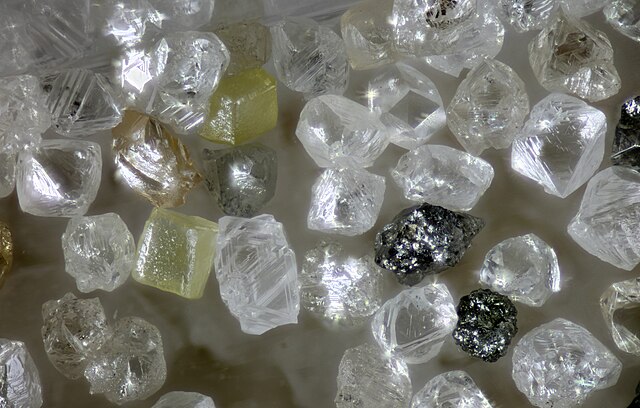Diamond
Chemical Composition
Diamond is composed entirely of carbon atoms arranged in a crystal lattice structure. This unique arrangement gives diamond its unparalleled hardness.
Origin and Location
Diamonds are found in kimberlite pipes, deep volcanic formations that are the source of most diamonds. Major sources include South Africa, Russia, Canada, and Australia.
Uses and Applications
Diamonds are used in jewelry, cutting tools, industrial applications (such as drills and saw blades), and electronics due to their hardness and thermal conductivity.
History and Discovery
Diamonds have been known for thousands of years. Their earliest recorded discovery dates back to ancient India. Diamonds were first used in jewelry around the 4th century BCE.
Physical Properties
Diamond is the hardest known natural material, scoring 10 on the Mohs scale. It is transparent, colorless, and exhibits brilliant sparkle due to its high refractive index.
Formation Process
Diamonds form under extreme pressure and temperature deep within the Earth's mantle, approximately 150 to 200 kilometers beneath the surface.
Optical Properties
Diamonds have a high refractive index (2.42), which gives them their characteristic brilliance. They also exhibit dispersion, or "fire," separating light into its component colors.
Classification
Strunz: 01.CA.05 - Dana: 01.02.01.01 - Class: Native Elements - Group: Carbon
Interesting Facts
Diamonds are the hardest material known to man, and they are used in cutting tools, industrial machinery, and as a symbol of love and wealth. The largest diamond ever discovered is the Cullinan Diamond, which weighed 3,106 carats.


